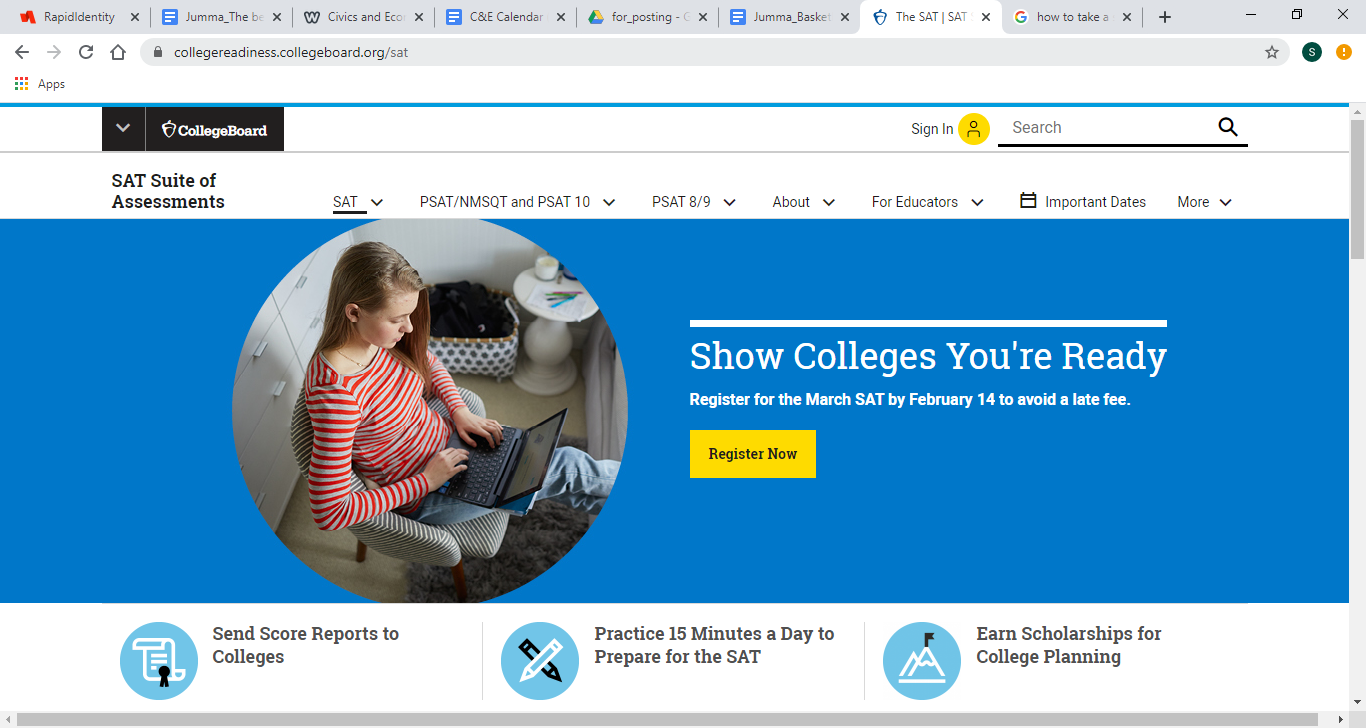As a senior, I am well-versed with standardized testing. From state tests to the SAT, every student has significant experience with testing by the end of their high school career. Experts in the educational field have questioned the value of standardized testing and provided research that undermines the idea that standardized tests provide accurate representations of a person’s academic ability.
Alfred Binet, a French psychologist, created the first standardized test of intelligence which is the ancestor of the modern IQ Test (also known as the Stanford-Binet Intelligence Test). By World War I, the practice of standardized testing became a normal practice as the government tested the knowledge of prospective soldiers with aptitude tests called Army Mental Tests.
The SAT and ACT are the most famous forms of standardized testing today. The Scholastic Aptitude Test, created in 1926 by the College Board, is a “nonprofit” group of universities and educational organizations. The original test lasted a mere ninety minutes and consisted of 315 questions that tested students’ vocabulary and basic math skills. The test grew in fame and developed into its current form with separate sections for English and math. By the conclusion of the second World War, became the most common college entrance exam.
In 1959, Everett Franklin Lindquist, an education professor at the University of Iowa created the ACT as a competitor for the SAT. The American College Test included a section about scientific principles as well as reading, math and english skills.
Additionally, the College Board also offers Advanced Placement examinations for a variety of subjects. These tests allow high school students to opt out of college level courses if their test scores are satisfactory. These exams remain extremely popular — nearly 350,000 students took the U.S. history exam alone. The PSAT is given to juniors as a precursor for the actual SAT and serves as a basis for National Merit Scholarships and other opportunities as well.
And that is just high school.
Most students test each year due to George Bush’s No Child Left Behind education reform which expanded state-mandated standardized testing as a means of assessing school performance.
Standardized testing, created to uniformly test the intellectual capability of its test takers, tests the ability of how well someone can take a test. The strict time constraints and material can harm slow readers and children who suffer from anxiety issues. Furthermore, the tests can not measure a students passion, creativity, work ethic, and skills/talent beyond the basic subjects. Intelligence, measured simply by how fast you solve a quadratic equation or correct a grammar mistake, only express your ability to process problems quickly. Additionally, these tests supposedly prepare you for college, but how does bubble-filling and time limits prepare you for an environment where experiments, case studies, and essays rule?
The College Board is listed as a “not for profit” organization but is essentially a capitalistic venture. The monopoly of an organization profited well over one hundred million dollars in 2017 and those profits are only increasing. It also has $1.1 billion in cash and investments according to public records and it is obvious why. In 2019, the SAT costed $64.50 ($93.50 if registering late) while AP exams costing $94 each and SAT score reports costing $12 each. Even College Board’s Scholarship Service Profile (CSS), meant to assist students cost $25 for the first report and $16 for each one after that.
But that’s not all. The College Board has also created “The Score Gap” which shows disparities in yearly household income and average score. The statistics express that the less money a household has, the lower the average score of the child. A 2015 analysis noted that the lowest scores come from students whose parents make less than $20,000 and the highest come from homes that make over $200,000. This inherently sets students of lower economic background up for failure and decreases their chances of escaping the financial bracket of their parents.
Greed is difficult to conquer, especially when it is protected by a team of the best corporate lawyers money can buy, but there is still hope. Many colleges have decided not to require applicants to take the SAT and ACT and rely on a student’s transcript instead. A recent California lawsuit blasted the SAT and ACT to be discriminatory and has gained support from across the nation.

Leave a Reply